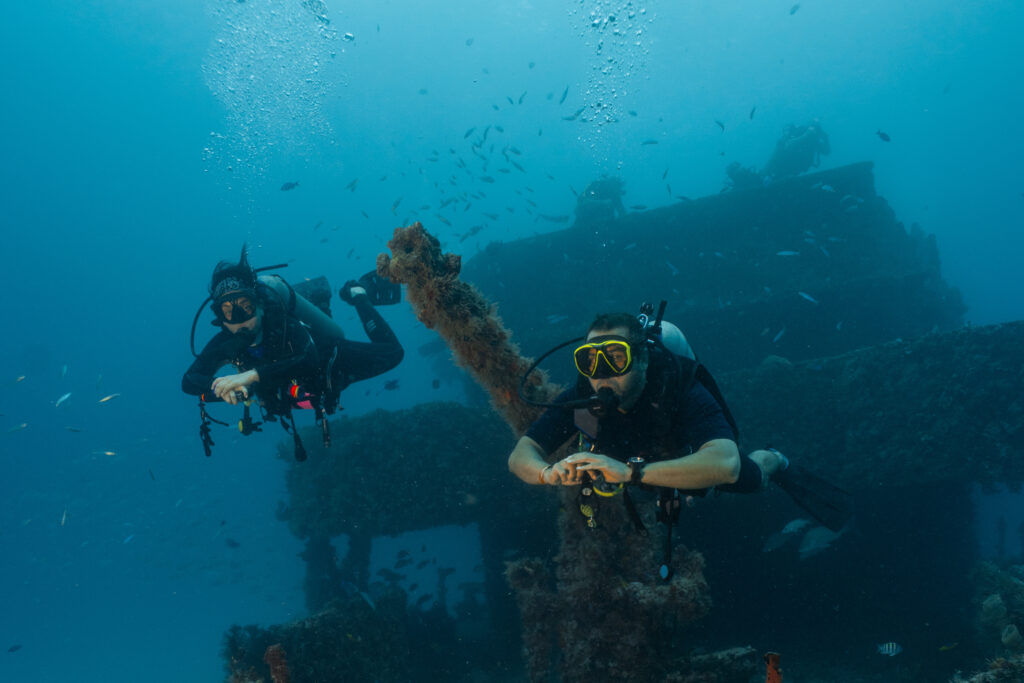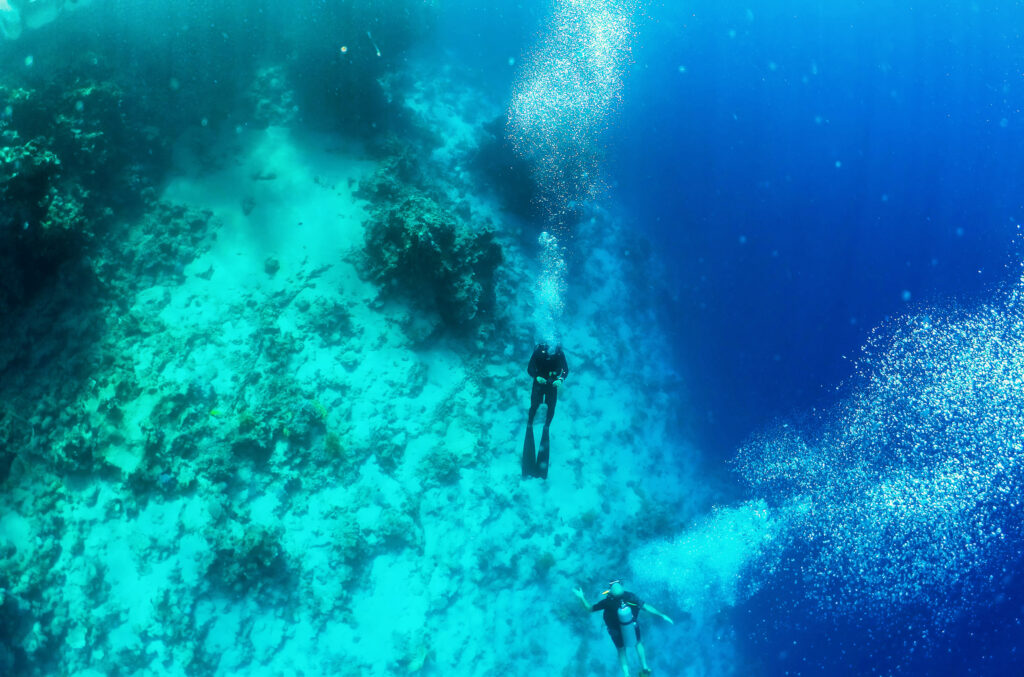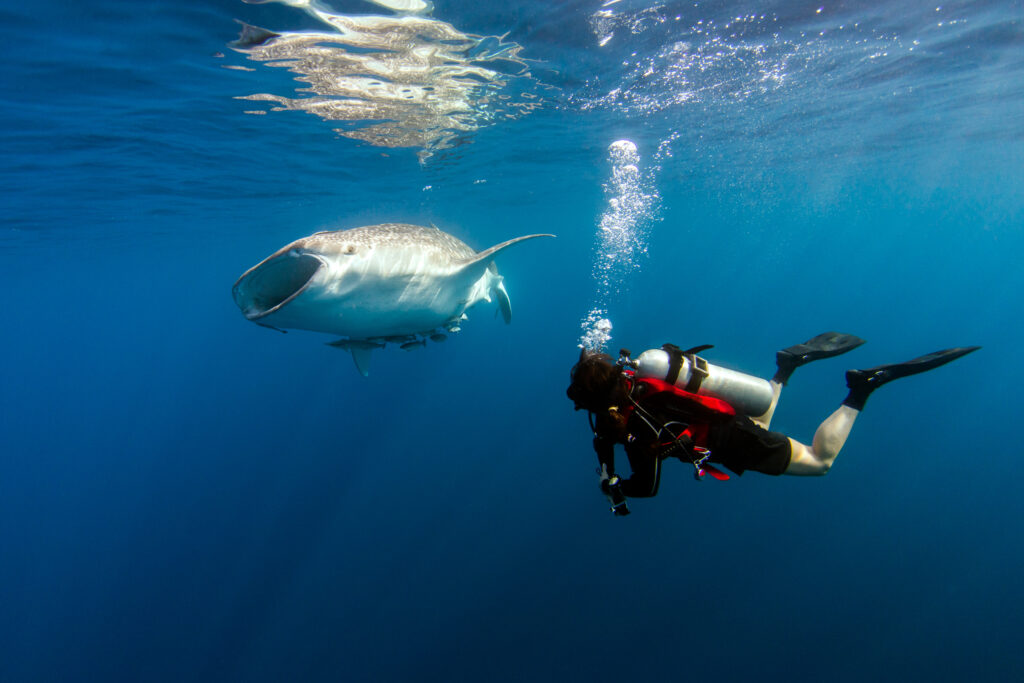What is Cyanosis?

Cyanosis refers to a bluish discoloration of the skin and mucous membranes caused by an insufficient level of oxygen in the blood. This condition can signal underlying health issues, particularly those related to respiratory and circulatory systems. In scuba diving, cyanosis is a critical indicator that a diver might be experiencing hypoxia, a dangerous reduction in oxygen levels. Recognizing and understanding cyanosis is vital for ensuring diver safety, as it can be a precursor to more severe conditions if not promptly addressed.
What is a Deco Mix?

Decompression mix, or deco mix, is a specialized gas mixture used in scuba diving to facilitate safer and more efficient decompression during ascent. Decompression is a critical phase in diving where accumulated inert gases, primarily nitrogen, are safely expelled from a diver’s body to avoid decompression sickness (DCS). Deco mixes are tailored to optimize the elimination of these gases, particularly during deep or prolonged dives where standard air might not suffice. Understanding and correctly using deco mixes can significantly enhance a diver’s safety, reducing the risk of DCS and other diving-related ailments.
What is Oxygen?

Oxygen is a fundamental element essential for the survival of almost all living organisms. In the context of scuba diving, understanding oxygen’s properties and its role is crucial for both safety and performance. This article delves into the various aspects of oxygen, from its basic chemistry to its physiological effects on divers, and the technologies used to manage it underwater. As one of the critical components in breathing gas mixtures, oxygen’s management and the equipment designed for its delivery are vital for successful and safe scuba diving experiences.
What is Partial Pressure?

Partial pressure is a fundamental concept in physics and chemistry, particularly significant in the context of scuba diving. It refers to the pressure exerted by a single type of gas in a mixture of gases. Understanding partial pressure is crucial for divers as it influences how gases are absorbed, transported, and expelled in the human body under varying underwater conditions. This concept helps in comprehending how different gases behave under increased pressures encountered at depth and is essential for ensuring safety and preventing diving-related illnesses.
What is Samba in Scuba Diving?

Samba, in the context of scuba diving, refers to an involuntary muscle spasm or twitching that occurs as a warning sign of impending hypoxia or loss of consciousness underwater. This condition is crucial for divers to recognize because it serves as a precursor to more serious and potentially life-threatening situations such as blackouts. Understanding samba and its implications can significantly enhance diver safety and preparedness, ensuring that appropriate actions are taken promptly to mitigate risks. While samba is less commonly discussed than other diving conditions, its impact on diver health and safety is equally important.
What is a Wet Pot?

A Wet Pot is a specialized water-filled hyperbaric chamber used predominantly in experimental work, training, and as a transfer chamber in saturation diving systems. These chambers play a crucial role in the field of hyperbaric operations and scuba diving by providing a controlled environment for divers and researchers. In training scenarios, Wet Pots simulate underwater conditions, allowing divers to practice and prepare for real-life situations. In experimental contexts, they enable scientists to conduct research on the effects of pressure and gases on the human body and various materials. Furthermore, Wet Pots serve as transfer chambers in saturation systems, where they facilitate the safe removal and handling of wet equipment after deep dives. Their versatility and utility make Wet Pots an essential component of modern diving and hyperbaric practices.
What is an Electronic Closed Circuit Rebreather?

An electronic closed circuit rebreather (ECCR) is an advanced type of breathing apparatus used in scuba diving. Unlike traditional open-circuit systems, which release exhaled gases into the water, ECCRs recycle the diver’s exhaled breath by removing carbon dioxide and adding oxygen. This sophisticated technology allows divers to maintain optimal gas mixtures at various depths, significantly extending underwater time and reducing the amount of gas needed. ECCRs have become essential in technical, recreational, and military diving, offering enhanced efficiency and safety. Their development marks a significant milestone in underwater exploration, providing divers with unprecedented capabilities.
What is a Unbalanced Regulator?

The unbalanced regulator, a once dominant piece of scuba diving equipment, is a technology rooted in the sport’s history. This device, which regulates the high-pressure air from the scuba tank to a breathable pressure for the diver, is distinguished by its susceptibility to changes in tank pressure. Though largely phased out in favor of balanced regulators, the unbalanced regulator remains a key reference point in understanding the evolution of diving equipment and safety.
What is Oxygen Therapy for Scuba Divers?

Oxygen therapy is a medical treatment that involves breathing pure oxygen or a gas mixture containing more than 21% oxygen. This method has been proven beneficial for various medical conditions and emergencies, such as decompression sickness, carbon monoxide poisoning, and hypoxia. In the context of scuba diving, oxygen therapy plays a vital role in promoting diver safety and ensuring a swift recovery from diving-related incidents.
What is Altitude Diving?

What is Altitude Diving? Altitude diving refers to the practice of scuba diving at locations where the water surface is at an altitude that requires modification of decompression schedules, typically more than about 300 meters (980 feet) above sea level. Altitude diving presents unique challenges for divers, as the reduced atmospheric pressure at higher elevations […]
